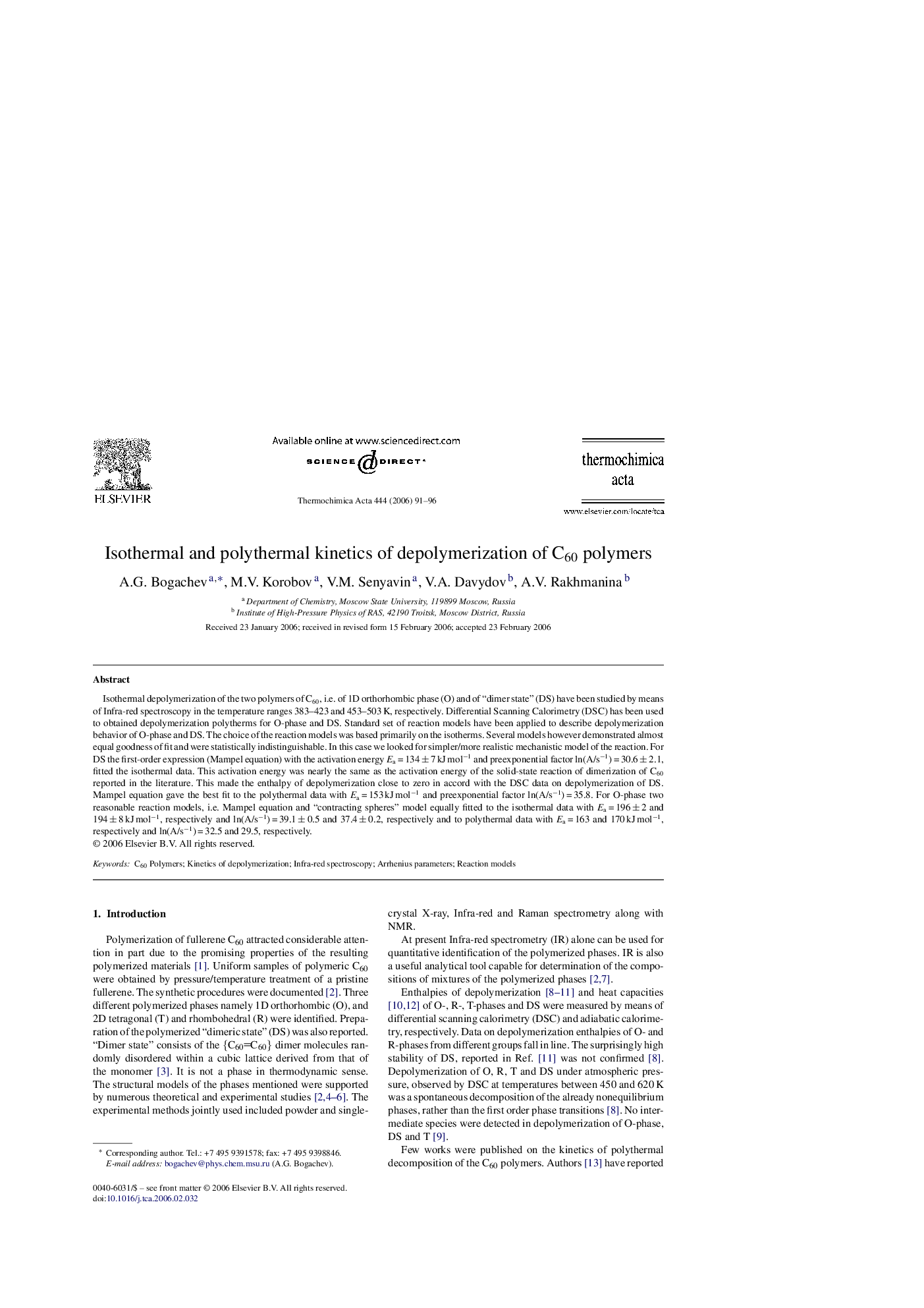| Article ID | Journal | Published Year | Pages | File Type |
|---|---|---|---|---|
| 676065 | Thermochimica Acta | 2006 | 6 Pages |
Isothermal depolymerization of the two polymers of C60, i.e. of 1D orthorhombic phase (O) and of “dimer state” (DS) have been studied by means of Infra-red spectroscopy in the temperature ranges 383–423 and 453–503 K, respectively. Differential Scanning Calorimetry (DSC) has been used to obtained depolymerization polytherms for O-phase and DS. Standard set of reaction models have been applied to describe depolymerization behavior of O-phase and DS. The choice of the reaction models was based primarily on the isotherms. Several models however demonstrated almost equal goodness of fit and were statistically indistinguishable. In this case we looked for simpler/more realistic mechanistic model of the reaction. For DS the first-order expression (Mampel equation) with the activation energy Ea = 134 ± 7 kJ mol−1 and preexponential factor ln(A/s−1) = 30.6 ± 2.1, fitted the isothermal data. This activation energy was nearly the same as the activation energy of the solid-state reaction of dimerization of C60 reported in the literature. This made the enthalpy of depolymerization close to zero in accord with the DSC data on depolymerization of DS. Mampel equation gave the best fit to the polythermal data with Ea = 153 kJ mol−1 and preexponential factor ln(A/s−1) = 35.8. For O-phase two reasonable reaction models, i.e. Mampel equation and “contracting spheres” model equally fitted to the isothermal data with Ea = 196 ± 2 and 194 ± 8 kJ mol−1, respectively and ln(A/s−1) = 39.1 ± 0.5 and 37.4 ± 0.2, respectively and to polythermal data with Ea = 163 and 170 kJ mol−1, respectively and ln(A/s−1) = 32.5 and 29.5, respectively.
